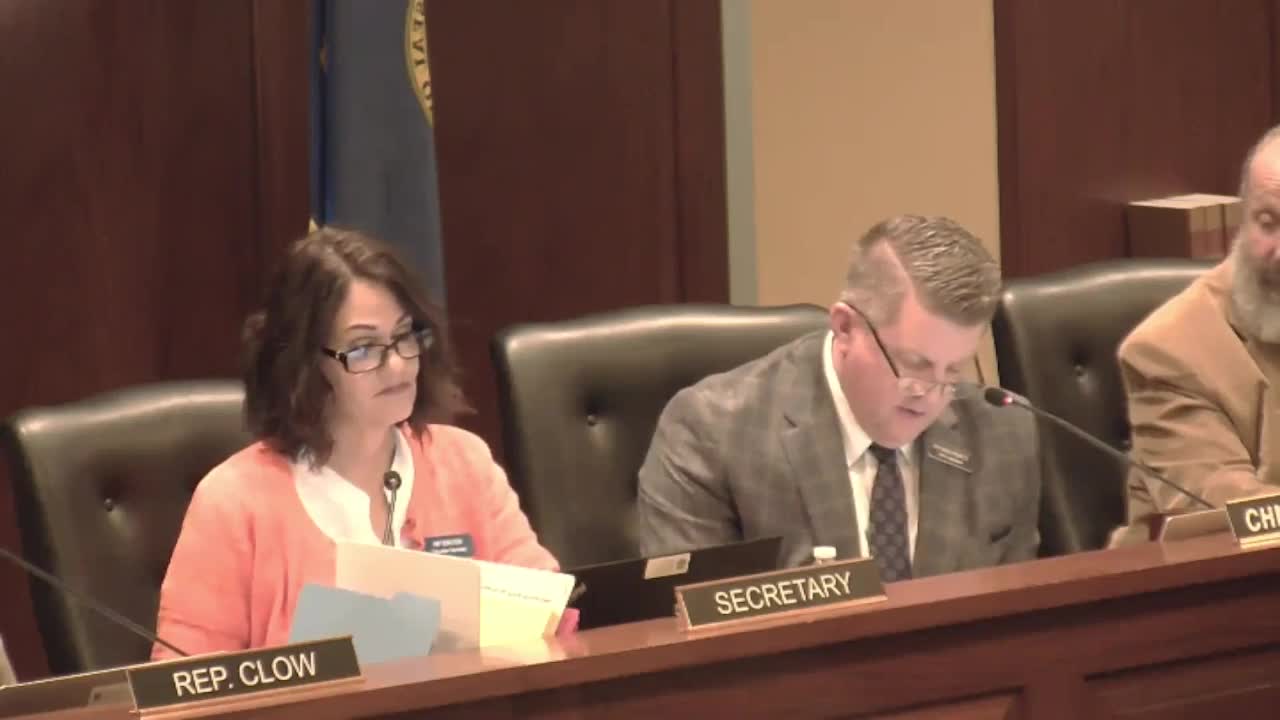Idaho committee deadlocks on school funding flexibility bill
This article was created by AI summarizing key points discussed. AI makes mistakes, so for full details and context, please refer to the video of the full meeting. Please report any errors so we can fix them. Report an error »

The Idaho House Education Committee faced a pivotal moment during its February 21, 2025, meeting, as a motion aimed at restoring flexibility in school district staffing allocations resulted in a tie vote of 7 to 7, ultimately causing the motion to fail. This decision has significant implications for how school districts manage their staffing and funding.
Representative Sonia Galaviz introduced a proposal to amend existing code that restricts the number of positions school districts can employ, which has been in place since the recession of 2007-2008. Currently, districts are allowed to employ 9.5% fewer positions than their allocated full-time equivalents. The proposal sought to eliminate a provision that penalizes districts with class sizes exceeding the statewide average, further reducing their staffing flexibility.
The committee discussed the adverse effects of the current restrictions, particularly on smaller districts, which often struggle to meet their staffing needs under the existing rules. The term "use it or lose it" was used to describe the situation where districts risk losing allocated funds if they cannot hire the necessary staff, even if their student enrollment needs could be met in other ways.
Despite the compelling arguments presented, the committee was unable to reach a consensus, resulting in the motion's failure. This outcome leaves the existing limitations in place, continuing to challenge districts in their staffing decisions.
In addition to the main discussion, the committee also addressed other legislative matters, including a proposal by Representative Clow, which was not detailed in the transcript but indicates ongoing legislative activity surrounding education in Idaho.
The failure to pass the motion underscores the ongoing debate over educational funding and staffing flexibility in Idaho, highlighting the need for continued dialogue and potential future legislative efforts to address these critical issues. As the committee moves forward, the implications of this decision will likely resonate throughout the state's educational landscape, affecting how districts allocate resources and respond to the needs of their students.
Representative Sonia Galaviz introduced a proposal to amend existing code that restricts the number of positions school districts can employ, which has been in place since the recession of 2007-2008. Currently, districts are allowed to employ 9.5% fewer positions than their allocated full-time equivalents. The proposal sought to eliminate a provision that penalizes districts with class sizes exceeding the statewide average, further reducing their staffing flexibility.
The committee discussed the adverse effects of the current restrictions, particularly on smaller districts, which often struggle to meet their staffing needs under the existing rules. The term "use it or lose it" was used to describe the situation where districts risk losing allocated funds if they cannot hire the necessary staff, even if their student enrollment needs could be met in other ways.
Despite the compelling arguments presented, the committee was unable to reach a consensus, resulting in the motion's failure. This outcome leaves the existing limitations in place, continuing to challenge districts in their staffing decisions.
In addition to the main discussion, the committee also addressed other legislative matters, including a proposal by Representative Clow, which was not detailed in the transcript but indicates ongoing legislative activity surrounding education in Idaho.
The failure to pass the motion underscores the ongoing debate over educational funding and staffing flexibility in Idaho, highlighting the need for continued dialogue and potential future legislative efforts to address these critical issues. As the committee moves forward, the implications of this decision will likely resonate throughout the state's educational landscape, affecting how districts allocate resources and respond to the needs of their students.
View full meeting
This article is based on a recent meeting—watch the full video and explore the complete transcript for deeper insights into the discussion.
View full meeting